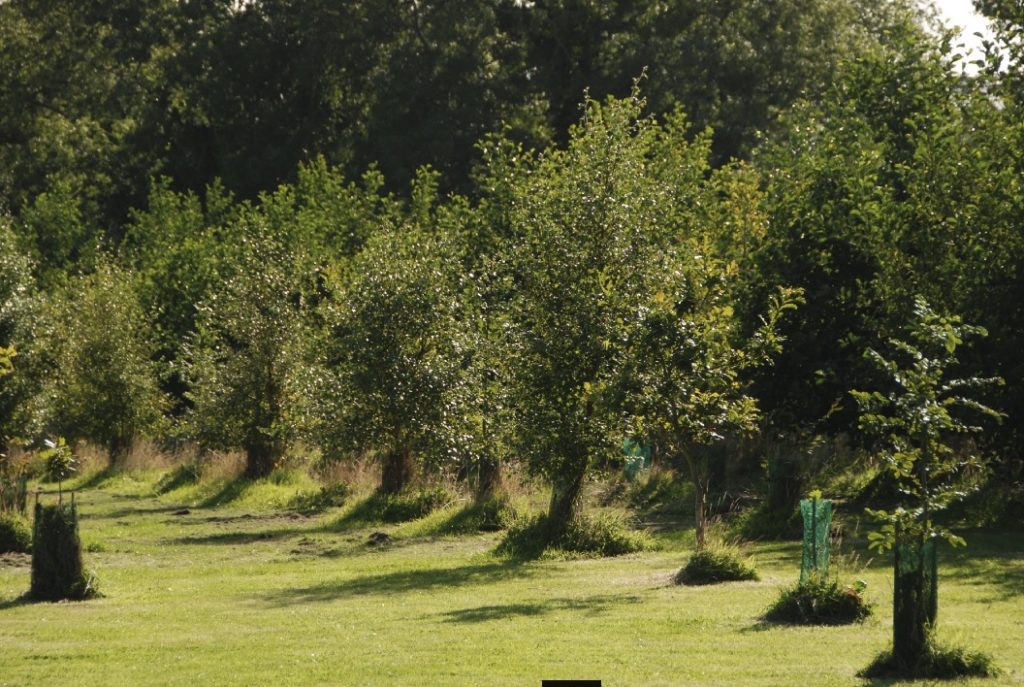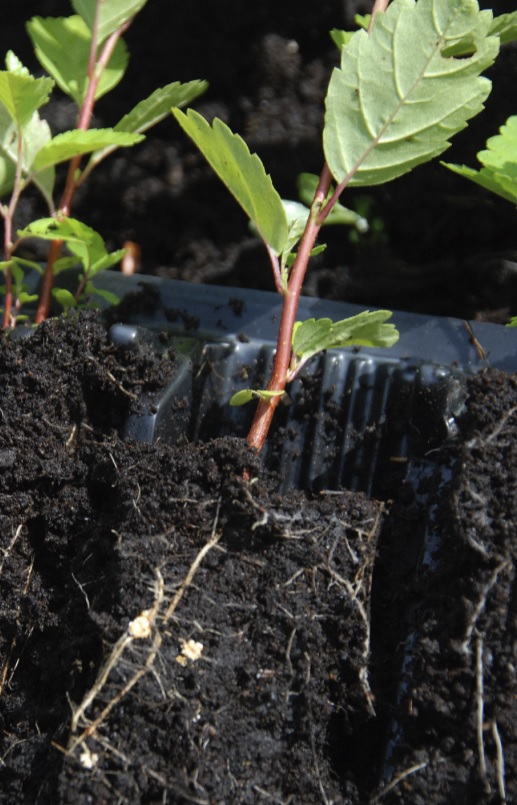Members of the Trust will know at first-hand that planting trees is
great as a pleasing form of outdoor exercise (though that depends on
the weather!), but of course also for what we know it does for the
environment. Trees provide habitats for numerous other organisms and
they remove and store carbon dioxide from the atmosphere at significant
rates – and they look wonderful in the right places.
However, some of our trees go further than this. It turns out that a
select few can fix nitrogen at rates not very different per hectare from
what clover can do! The champion at this is the alder. 30-year old alders
can fix more than 40 kg nitrogen per hectare per year, compared with a
field of clover, which can fix about 50 kg N/ha p.a. And they go on to
release significant amounts of newly fixed nitrogen into the soil.

How is this achieved? Alders of all sorts, including the one we very often plant in wet sites, Alnus glutinosa (Black Alder, European Alder or
just Common Alder – see photograph 1), have an important symbiotic
relationship with a nitrogen-fixing bacterium called Frankia alni ,
exclusive to alders. The bacterium is found in root nodules , essentially a
form of gall, though here the gall is underground. A single nodule can be
as large as a human fist!
The bacteria in the gall absorb nitrogen from the air and make it
available to the tree. The alder, in turn, provides the bacterium with
carbon , which it produces through photosynthesis . As a result of this
mutually beneficial relationship, alder improves the fertility of the soils
where it grows, and as a pioneer species , it helps provide additional
nitrogen for the successional species that follow. So, logically, if we plant
some alders in amongst other sorts of trees, the planting will do better
than if there were no alders in the mix.
And, finally, it has been found that increases in atmospheric CO 2
actually cause faster nitrogen fixation by the root nodules. So the
continuing increases in the air’s CO 2 content that underlies global
warming “will greatly enhance the growth of earth’s nitrogen-fixing trees,
while stimulating their fixation of nitrogen and increasing their root
exudations of nitrogenous substances, all of which phenomena bode
well for the biosphere”.
So not only are alders very good as a windbreak, like wet conditions
and will grow in any soil, even poor ones, but they actually improve the
soil they grow in – and with more CO 2 , they will thrive even more and
help restrain global warming!
Now, because we are growing more of our own tree stocks from
seed, we have in August 2013 more than 600 young alder seedlings.
When we came to prick them out, we were amazed to see that root
nodules were already apparent on seedlings as small as 4 cm in height
– see below.
